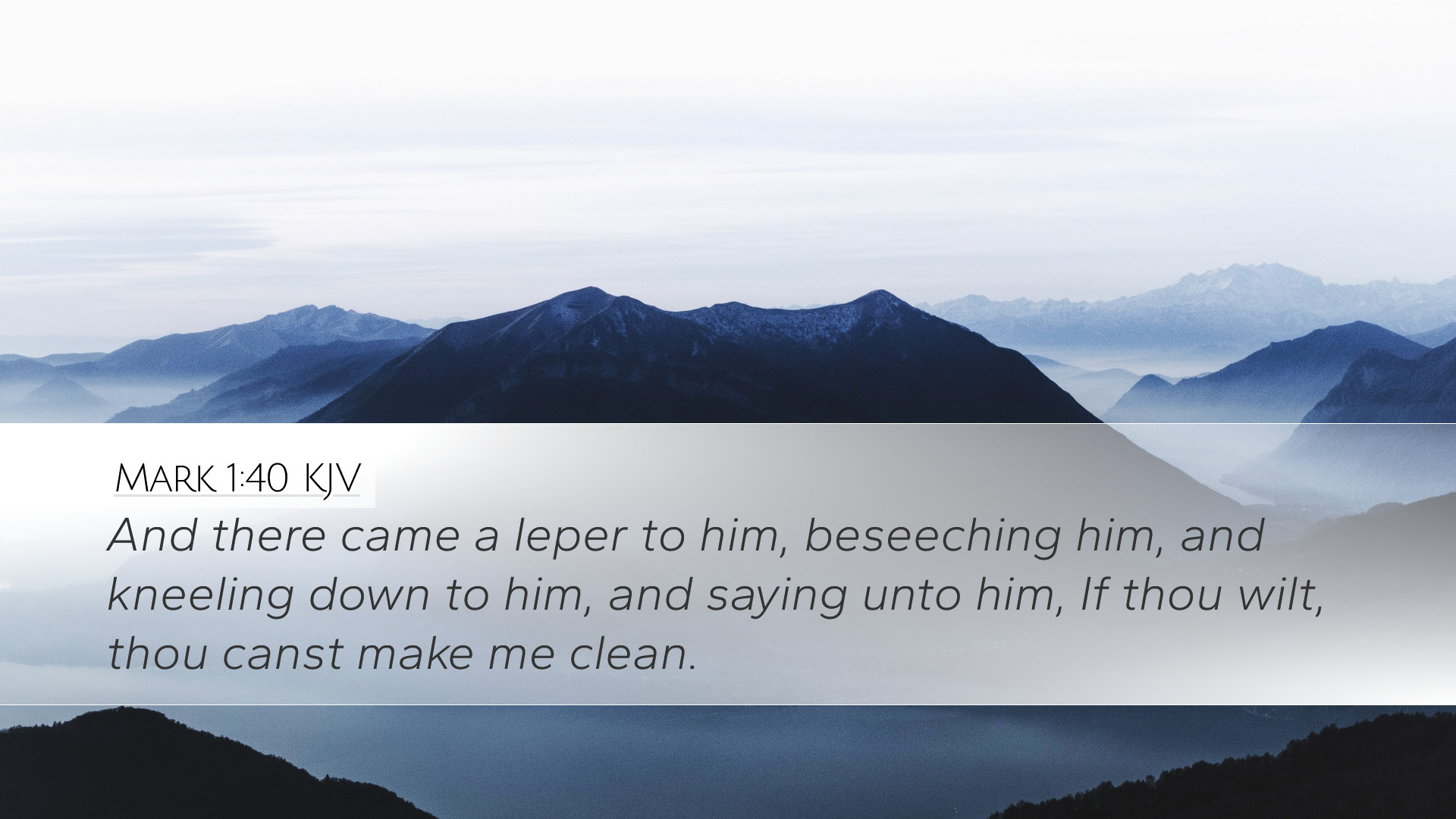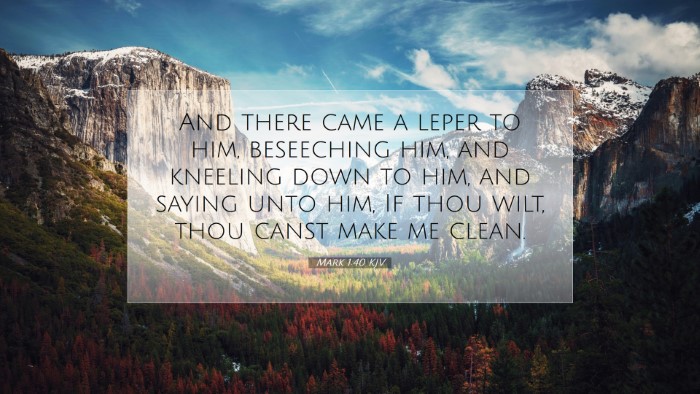Commentary on Mark 1:40
Mark 1:40 states: "And there came a leper to him, beseeching him, and kneeling down to him, and saying unto him, If thou wilt, thou canst make me clean." This verse presents a significant interaction between Jesus and a leper, showcasing themes of faith, healing, and the nature of Christ’s ministry.
Introduction
The context of Mark's Gospel is essential as it emphasizes Jesus' authority and His compassionate mercy. This passage is critical as it illustrates the willingness of Jesus to interact with those whom society marginalized.
Analysis of the Verse
-
The Leper's Condition:
The leper’s physical state symbolizes spiritual uncleanness, alienation, and societal rejection (Matthew Henry). Leprosy in biblical times rendered individuals unable to participate in communal and religious life, emphasizing the burden the leper carried.
-
The Leper’s Approach:
The leper's approach to Jesus is a model of faith. He comes with a posture of humility—kneeling before the Lord, which Albert Barnes notes reveals his recognition of Jesus's authority. This stance is crucial for understanding how faith responds to the divine.
-
Desperation and Faith:
His beseeching plea—“If thou wilt”—indicates both desperation and acknowledgment of Christ’s power. Adam Clarke points out that the leper does not presume upon Jesus’ mercy but rather seeks to understand His willingness. This is a profound lesson in trust when one is desperate for healing.
Theological Insights
-
Christ’s Authority:
The leper’s recognition of Jesus’ ability to heal typifies the authoritative power of Christ throughout the Gospels. His inquiry about Jesus’ willingness underscores the extent of divine compassion, suggesting a strong theological reflection on human need and divine response (Barnes).
-
Compassion and Willingness:
The leper represents all who feel unloved or unworthy. Jesus’ reply, which is imminent in the subsequent verses, illustrates His readiness to heal not just the physical ailment but also the social and emotional scars left by such diseases (Henry).
-
Faith's Role in Healing:
The leper’s triad of faith—his recognition of Jesus’ capability, his kneeling posture, and his beseeching attitude—becomes a model for biblical faith. This instance challenges scholars and pastors alike to consider the nature of faith in healing and salvation in their ministry efforts (Clarke).
Practical Applications
-
Ministering to the Marginalized:
This passage serves as a clarion call for contemporary believers to reach out to those who are marginalized and suffering, emulating Christ’s inclusive love (Henry).
-
Understanding Divine Will:
Just as the leper sought to understand Jesus’ will, believers today are encouraged to approach God with boldness yet with reverence, seeking to understand His will for their lives (Barnes).
-
Kneeling in Worship and Need:
The act of kneeling symbolizes both neediness and worship, reminding believers to come before Christ in both communion and desperation. It encourages a dual state of humbling oneself while engaging with the Lord’s power (Clarke).
Conclusion
Mark 1:40 encapsulates the heart of the Gospel message—the intersection of human need and divine mercy. This passage remains timeless, urging us to reflect on our approach to Jesus in our need and our willingness to extend that same compassion to others.


